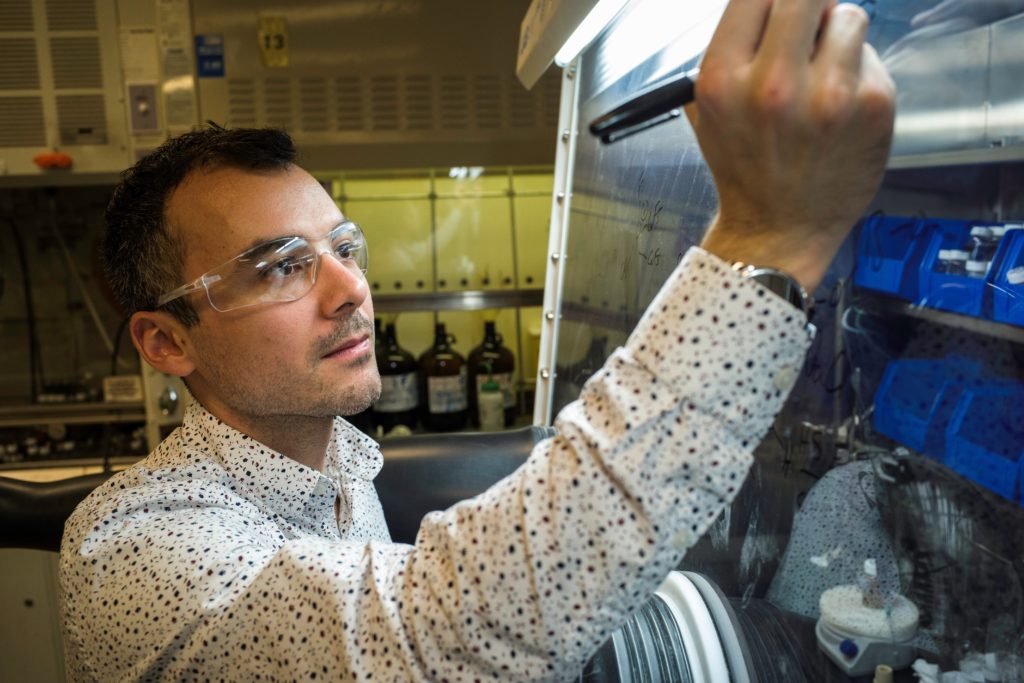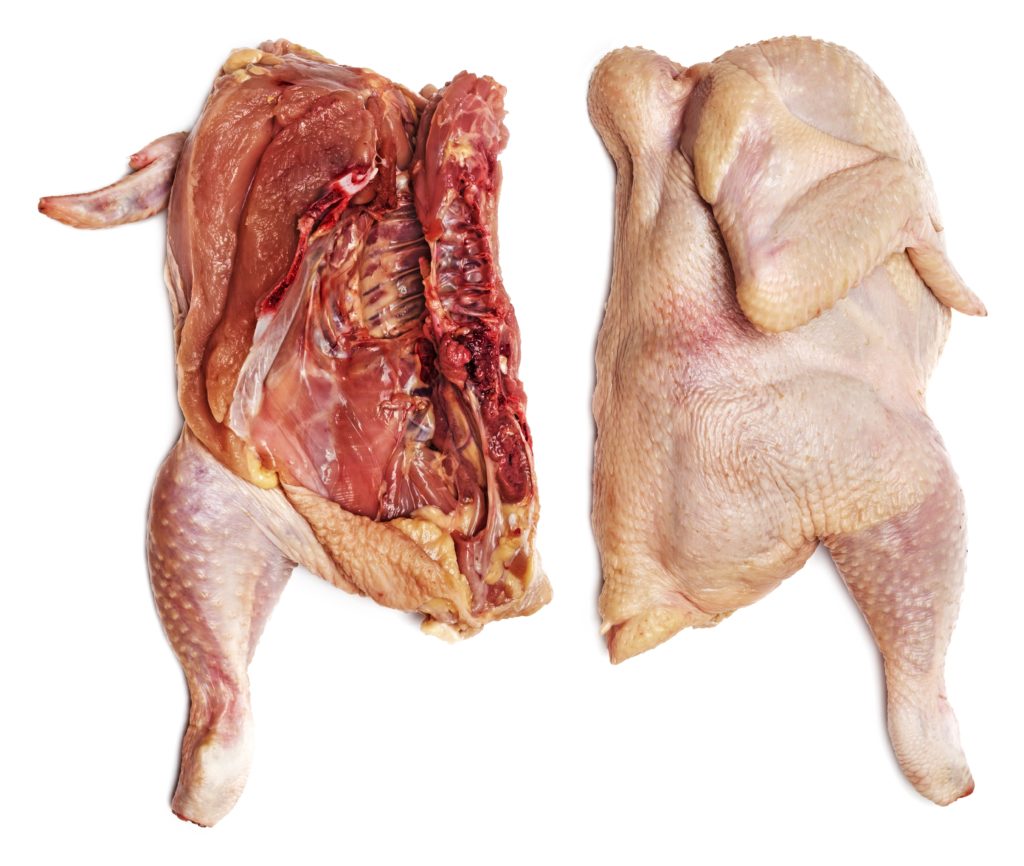A team of chemists have developed accurate, consumer-friendly methods of indicating whether food is safe for consumers. Sweeping ramifications address food security, waste prevention, consumer safety and even healthcare resources – that is, the prevention of hospital stays.
Don’t want to take a chance on the mayo that’s been lingering in your fridge for a few weeks? Professor Christopher Caputo, Canada Research Chair in Metal-Free Materials for Catalysis, has determined a way to test food to ensure that it’s safe for consumption. This finding could enhance consumer safety, prevent waste, aid food security and even spare healthcare resources by preventing poisoning.

The findings of this research, funded by the Natural Sciences and Engineering Research Council of Canada, the Canadian Foundation for Innovation and Inkbox Ink, were published in the Journal of Chemical Technology and Biotechnology (2020).
Caputo, who joined the Faculty of Science in 2017, has an impressive track record, winning the Petro-Canada Young Innovator Award in 2019 and the John Charles Polanyi Prize in Chemistry in 2018. He sat down with Brainstorm to discuss this exciting new research on how to detect food spoilage.
Q: You undertake research with real-world application. And now you’ve turned to food spoilage prevention – something of interest to everyone.
A: Yes, the nice thing about this type of chemistry is that it is digestible [no pun intended] to everybody. Everybody gets food going bad, everybody gets colours, and things changing colour to act as a sensor. I like this type of work because it can be easily communicated to the public, and it gets people excited about the work.

Q: What compelled you to pursue research in food spoilage?
A: It was definitely a team effort to look into food spoilage that began in 2018 and built on our previous work on reactive dyes.
What drove me to food spoilage? When we were setting up the lab, I came across some articles [Globe & Mail, 2014] highlighting the fact that in Canada, we throw away about seven billion kilograms of food each year, which is absurd. Food scarcity is increasing due to climate change. It’s getting harder to grow crops in the land.
I felt compelled to look a little deeper into why food spoils. Is there a solution, in chemistry, that could provide some insights? If we could prevent a fraction of food waste, it’s better than nothing. Because the act of food going bad is a bio-chemical reaction, I figured there’s work that can be done from a chemical prospective.
I’m not the first person to think of this; there’ve been a lot of interesting sensors developed for food spoilage, but nothing has been commercialized yet. Nobody has a sensor in their food packaging that tells you if the food is good or not.
Q: What were the objectives of this research?
A: We sought to develop a dual sensor to detect (by changing colour) both: (1) the presence of spoiled food (when food goes bad, it releases molecules called biogenic amines – this is what smells); and (2) the cause of the spoilage, which, in most cases, is the presence of oxygen. Bacteria love oxygen and, if oxygen is present, the bacteria will start to degrade the food and release the stinky biogenic amines.
We wanted to develop a sensor to detect both. Those were the high-level goals.
Q: Tell us about the experiment.
A: We went to York Lanes and bought some raw chicken. The post-doc working on the project, Dr. Ian Mallov, found a clever way to do the experiment by immobilizing our sensors into an eatable seaweed-derived gel as a way to test these real samples.
We put the chicken samples in the fridge and at room temperature, then watched them for six to 12 hours. We could see that, over time, the sensors on the chicken began to change colour.

The USDA (United States Department of Agriculture) states that meat starts to go bad after being out of refrigeration, at room temperature, after two hours. And our sensors [on the room-temperature chicken] showed this by changing colour, whereas the sensors in the chicken in the fridge never changed colour.
Q: What’s next for this research?
A: We’re still at the qualitative level; we can’t offer quantitative measures yet to measure the degree to which the meat, or food, is off. That’s the next phase of research for us.
I would like to get engaged in some interdisciplinary collaborations with biologists or mathematicians doing modelling. I think York is a wonderful ecosystem to undertake this kind of work.
Q: What kind of applications or commercialization do you see stemming from this research?
A: I see personal home use for leftovers. I truly feel that we prematurely throw leftovers away. When I was a kid, my mom used to throw food away the next day if we didn’t eat it. Now, I’ll eat it a week later… and it’s still good.
There’s terrific potential for the commercialization of a food spoilage sensor. Along these lines, we undertook an NSERC Idea-to-Innovation market assessment on this project. We discovered that there are some barriers due to liability, existing supply chains, etc. Sadly, the truth is companies might not want you to know if the food is bad before you buy it.
But I would love to pursue that type of application – a user-friendly, direct-to-consumer product.
Q: What kind of support has York provided?
A: We’ve been working with Innovation York on the potential commercialization. We filed intellectual property protection on this, with the assistance of Innovation York. I’m working with Laura McLachlan, associate director, Commercialization and Industry Partnerships. We’re in regular communications about ways in which we can take this further. Innovation York has been ultra-supportive of this work.
Speaking more broadly, the freedom to pursue whatever research we see fit is something that’s really beneficial at York.
To read the article, go to the website. To learn more about Caputo, visit his Faculty profile page.
To learn more about Research & Innovation at York, follow us at @YUResearch; watch our new video, which profiles current research strengths and areas of opportunity, such as Artificial Intelligence and Indigenous futurities; and see the snapshot infographic, a glimpse of the year’s successes.
By Megan Mueller, senior manager, Research Communications, Office of the Vice-President Research & Innovation, York University, muellerm@yorku.ca
